”Design Beyond Technology” second edition
ho
On Thursday 25 and Friday 26 of March, ADI-FAD organized the second edition of Design Beyond Technology.
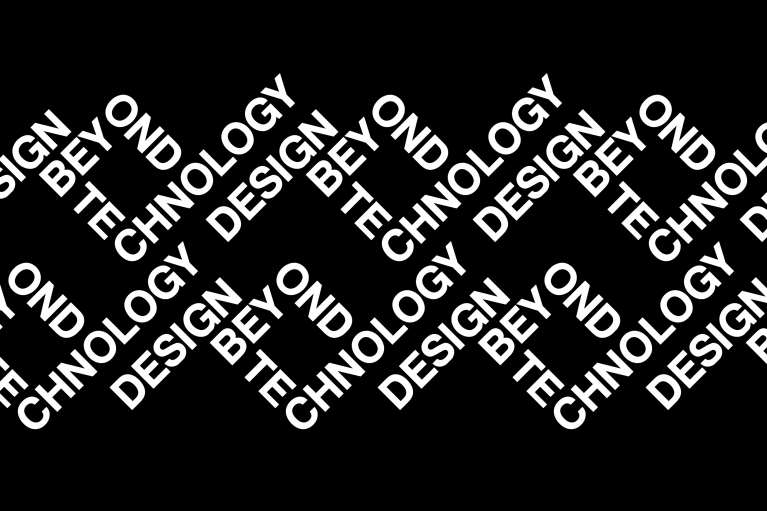
On Thursday 25 and Friday 26 of March, ADI-FAD organized the second edition of Design Beyond Technology.
It was streamed from the Roca Barcelona Gallery and was available on YouTube in its original version and on Vimeo in a Catalan and Spanish version, a 6-hour pill and 12 speakers with twenty-minute interventions.
The first day was presented by Rafaella Perrone, one of the three curators of this second edition jointly with Joan Recasens and Genís Senén. The first day, a continuous 4-hour session started with the introduction given by the ADI-FAD president, Salvi Plaja.
As Salvi Plaja, president of ADI-FAD, explained, ”We brought together industry, design and technology in these sessions, since design has the creative potential to humanize the future and allow businesses to humanize this technology as part of their products and services”.
Rafaella Perrone introduced the theme of the sessions: Digital Realities, with the main topic of coexistence between reality and virtuality. In person from the Roca Design Gallery she presented the objects that won the Delta Awards 2020 (the BD Barcelona armchair, the GOFI lamp and the BQ router), which through the Crowd graphic design studio have generated the windows and transitions by animating them. “These three objects represent a chair to sit on, a light to illuminate and live the space and a router, which is a symbolic object according to De Fusco, a receptacle object containing technology inside it that is invisible to users but allows them to access another world”.
These new realities, or digital realities, contain many concepts, from virtual reality to augmented reality, 3D visualization, robotics, artificial intelligence, digital fabrication and more, concepts that are starting to be common and indispensable for businesses, designers and students. Rafaella Perrone presents DBT as a day for learning, thinking and engaging in critical thinking, days of inspiration for ADI-FAD members and anyone interested in design and technology.
We can find the Thursday 25/3/21 session on ADI-FAD Youtube the conferences in original version, in Catalan and in English with the following timing:
- Fredo De Smet (https://www.fredodesmet.com/) 0:41:00 (30′).
- Kris de Decker – Low-tech Magazine. 1:10:00 (34′).
- Diego López – Norman Foster Foundation. 1:44:00 (33′).
- Manuel Jimenez – Nagami. 2:13:00 (33′).
- Qin Li – Fuseproject. 2:46:00 (35′).
- Isabelle Olsson – Google. 3:17:10 (35′).

One of the first speakers was Fredo De Smet (0:41:00), who graduated with a thesis that questions the value of reality. He has worked as a curator of the Media Culture Fast Forward, at the Hello Robot exhibition of the Vitra Design Museum and at the Artificial Stupidity publication.
Fredo sets out and updates the juncture between design, technology, society, economy and knowledge, what he calls “A cultural revolution”. Silicon Valley companies have allowed, for example, Mark Zuckerberg to be named Person of the Year in 2010 and to be considered a thief in 2018. It is important to claim the future, we are in a digital culture and are shut away behind screens, we use machines as tools, physical machines such as clocks that influence the programming of time and of meetings.
According to Fredo, we are in a world of abundance, the digital sphere offers us a paradise of possibilities, no one is awaiting your design or your photograph. It is a world on all sides, with no borders, where we look for wi-fi-free zones to isolate, to disconnect like on a holiday. It is a hyper-personal world, easy but conflictive, a school of attention. We need to claim that human part from the future, placing women, men or an animal in the central part of the system, what do we want to value? profit or benefit? attention or intention? competition or competences? It is a historic time for rewriting our digital culture.
The 10 rules for digital reality, in Artificial Stupidity, are: Let yourself be carried away with dignity, embrace ambivalence, activate your network, value your attention, live your body, share commons, burst the bubble, rethink your identity, learn to learn. TW@FredoDeSmet.
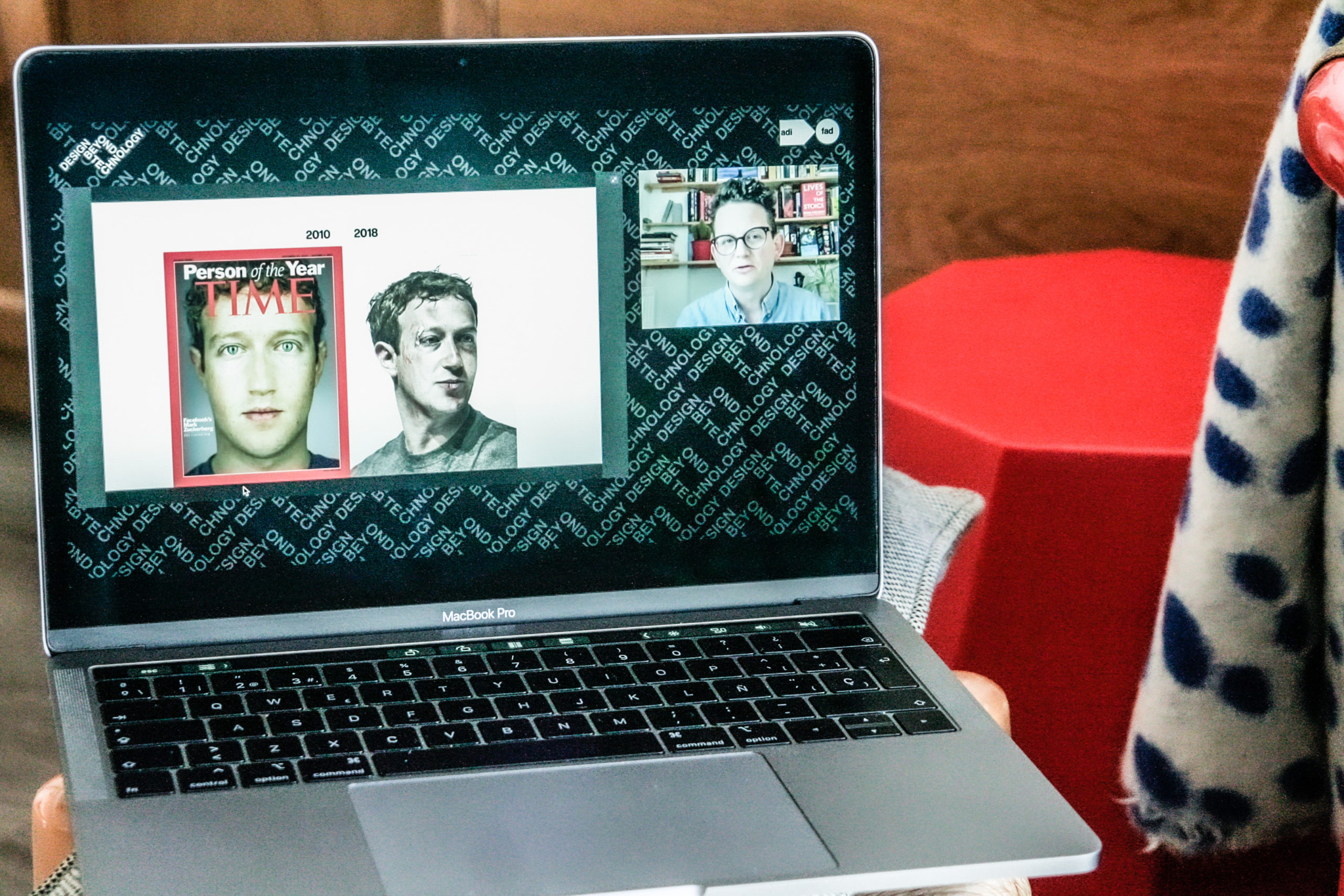
The second speaker was Kris de Decker (1:10:00), of Low-tech Magazine. He believes in technological progress and in knowledge to design a more sustainable society. A low-tech website is a website that is not updated every second but complies with its principles and generates planet-wide benefit.
We have to turn to renewable energies but have to rethink products, cars and objects that will consume far less energy. The internet is not tangible but consumes vast amounts of energy and we have to know how to use it with full awareness, just like with cars: the more they weigh the more they consume. Websites operate in the same way, we have to reflect and think of websites that are not so interactive but are more efficient. How can we build more effective websites? We can find solutions in the past, in the early days of the internet when we had greater levels of patience and we were not consumed by immediacy. TW @kris_de_decker @lowtechmagazine.
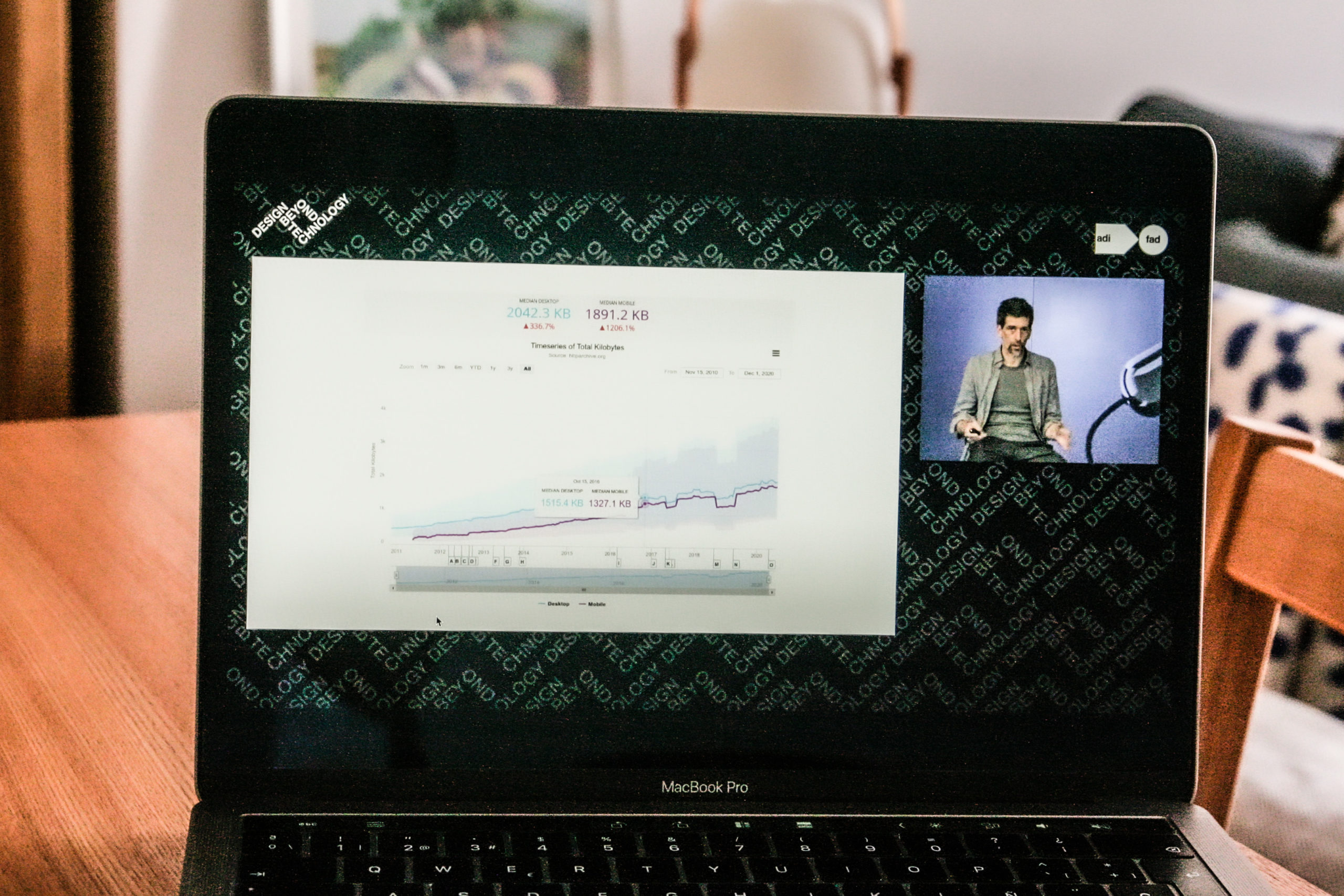
The third speaker was Diego López (1:44) from the Norman Foster Foundation situated in the heart of Madrid, in a palace with an archive of Foster’s works since his university days, like a pavilion of inspirations that features pieces that inspire his work, such as the Voisin car by Le Corbusier.
Buckminster Fuller and Norman Foster collaborated for 12 years, sharing the principles of “Design Science”, doing the maximum with the minimum. They created different projects such as the Samuel Beckett Theatre in Oxford or the Climatroffice. Diego focused on the Autonomous House, created in 1982, where Fuller combines the geodesic domes he himself patented, one translucent and the other transparent, rotating to obtain transparency and darkness according to the house’s needs throughout the day. The Foundation conserves a maquette that was presented in London 12 days before his death, when Fuller received the Royal Gold Medal.
Diego tells us about three major blocks: the geodesic dome and the structural elements that comprise it, the subdivision of a spherical icosahedron, cutting the sphere at five eighths of the height, using repetition and efficiency in its construction.
The internal spaces, in a cascading procession of 2.6 metres, connect several levels in which to accommodate from rooms to cars. Foster adapted the levels to ellipses so that they would not compete with the external dome. The place where the autonomous house will be installed is the Chateau La Coste. TW @NormanFosterFdn.
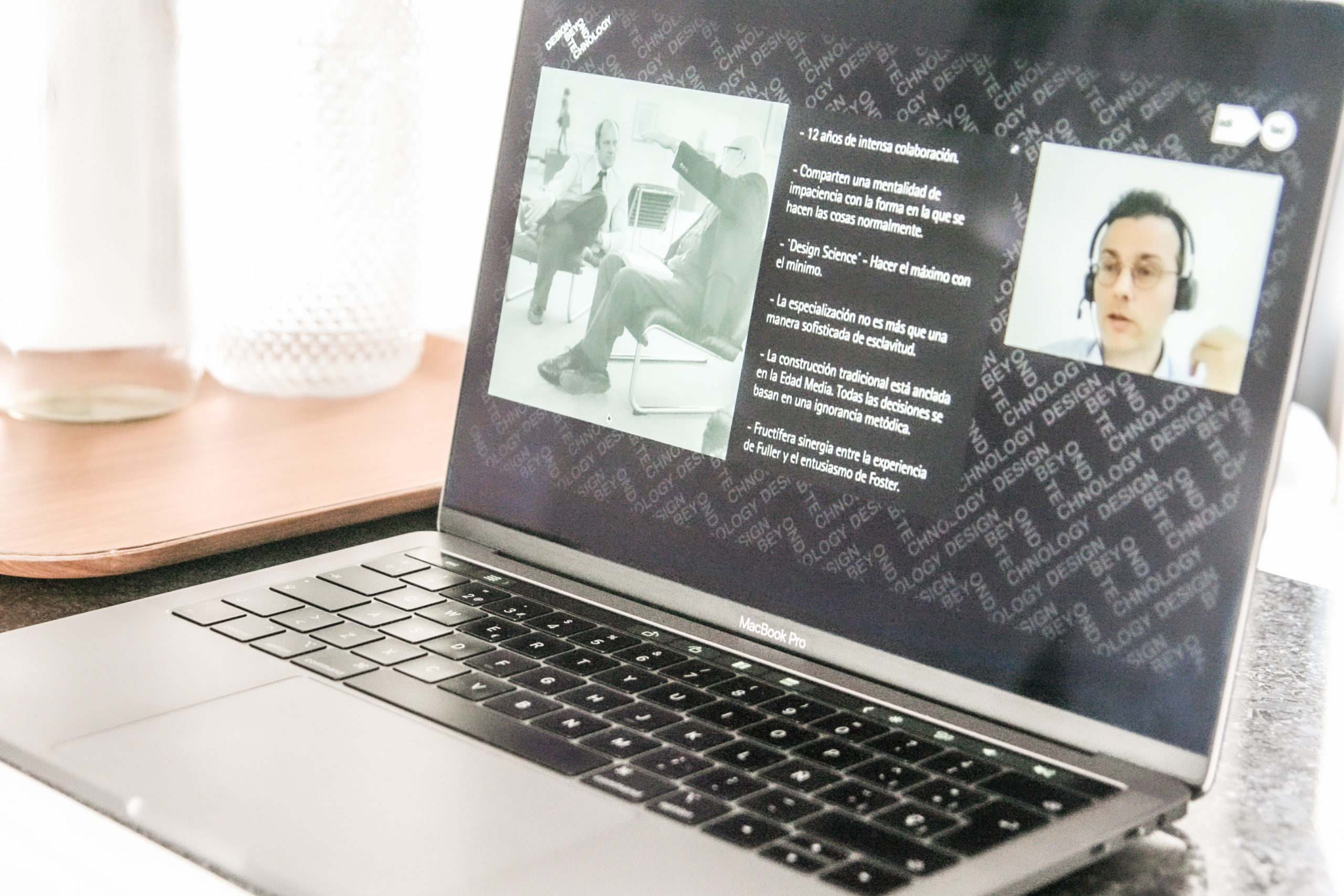
The fourth speaker was Manuel Jimenez, from Àvila, co-founder and CEO of the spinoff robotic fabrication and design brand Nagami as well as other companies such as Automated Architecture Ltd (AuAr), with the intention of democratizing the digital construction arts (2:13). Automation is happening everywhere, while construction remains very costly and expends many resources. In fact, construction is among the least automated disciplines, which means that we cannot meet housing demand and needs. The modern movement was born of standardizing the first industrial revolution and it impacted housing. The current industrial revolution is experimenting in the space race, but there are very few examples beyond Katerra. Construction today focuses on the automatic assembly of pieces by industrial robots and on large-scale 3D fabrication, innovation in materials or the creation of algorithms that will facilitate the use of materials such as bamboo.
Nagami is the spinoff that experiments in the creation of products that can be personalized, products designed by Ross Lovegrove, Hector Serrano, Patrik Schumacher of Zaha Hadid Architects, Daniel Widrig and Manuel Jimenez. These pieces of furniture and products are printed in 4 hours, do not generate stock and are competitive in price, around 500 euros, but they have also developed The Fashion Awards trophy, an award made from Parley Ocean Plastic®, and also sculptures. Manuel says that he is at a magical point where he can explore the possibilities of 3D printing, applying it to architecture and to everyday objects.

The fifth speaker was Qin Li (2:46:00), vice president of Design of Fuseproject, founded in 1999 and headed by Yves Behar. Qin works with Yves since 2004 and shows us three projects that feature solutions for how technology can be incorporated to improve our quality of life (35′): Moxie, Snoo and Ori.
Moxie is an assistant or companion that helps boys or girls develop their abilities. Qin discusses the principal challenges of developing this revolutionary product that wants to look like a good friend and not a robot, with large eyes that permit eye contact and boost interaction with children.
Snoo is a project developed with the paediatrician Dr. Harvey Karp over a 5-year period. Children give their parents many sleeplessness problems during their early months until they are two. Qin shows the challenge of creating a piece of furniture incorporating technology and sensors inside it, taking safety norms into account and prototyping to adapt and create a comfortable and safe product for the range of baby sizes. The sensors react to crying and are an example of how design and technology can address the most complex problems.
Ori Systems is a holistic 360 project from product to interface, robotics applied to improving the quality of life of small homes in cities. The challenge of large cities lies in the small size of apartments and how design can find solutions to improve the experience of living in 35 metres square, with a configurator that can push aside and move walls via a module to transform the dining space, bedroom or study. In one room, millions of options. TW @Qin_Li VP of Design @Fuseproject.
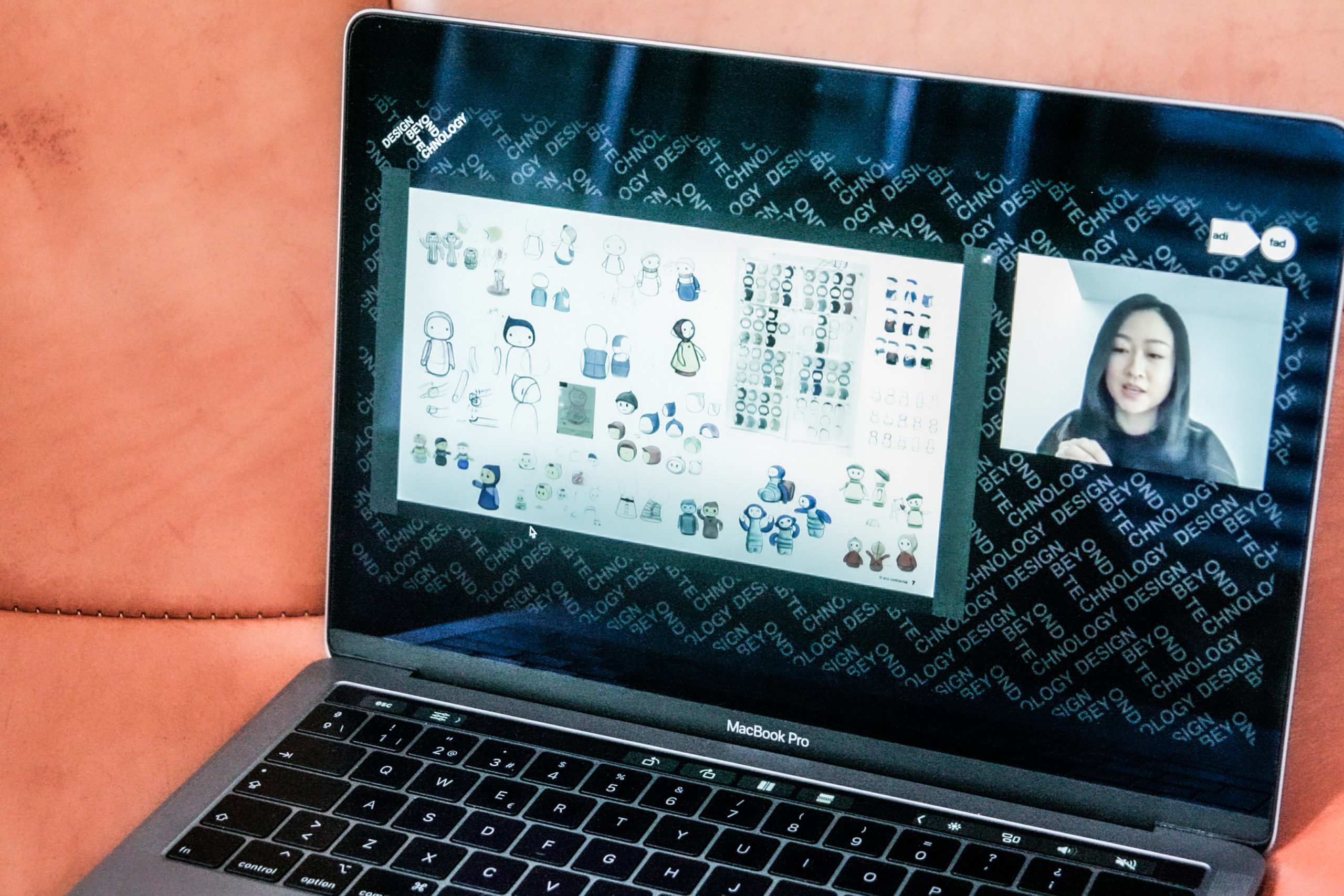
The sixth and last speaker was Isabelle Olsson, senior design director of Google Nest and Wearables (3:17:10). Isabelle gave an overview of the Google Nest philosophy, methodology and portfolio, with the title of “The softer side of technology”. She leads the desired shapes of the tangible according to a design that aspires to create its own technological language, inspired in covering technology in snow, with optimism and the sensitivity to generate a smile in the user, distancing itself from the black boxes.
Products such as speakers, assistants, thermostats, computers, video consoles or headphones that seek to be familiar, intuitive, simple, gesture-driven, natural, sustainable and follow Google’s human, optimistic and bold design manifesto. Isabelle proposes to replace design thinking with design feeling. As designers we are educated in methodology to be rational but forget to think of how the things we design make us feel, although we need to use data and intuition concurrently, not only facts and statistics but also instinctive feelings that operate without the need for rational conscience.
Isabelle proposes a pyramid of needs where the useful, functional and reliable are at the bottom and the truly important ones are pleasure and meaning. This is why she proposes a tool she uses with her team. When we ask about a design, we don’t ask what you think but what you feel. This question will give us stronger and more thoughtful answers. Isabelle proposes a methodology for working in a word cloud of perceptions for assessing the products.
Isabelle works on the colour proposal for Pixel Buds headphones, which must represent and adapt to every type of skin. She suggests painting one’s nails with the colour proposal of the products she designs in order to assess the colour in different places, under different lights and at different times of the day.
Isabelle shows us a strip where two people are sitting down, speaking of a house yet each one imagining a different sort of house. Isabelle insists that it is indispensable to get rid of this ambiguity in the earliest stages of the design process to make products more quickly. Testing the future in the present through maquettes, prototypes and variations on the same idea, variations that are imperceptible but allow us to take decisions, think of actions and involve shapes in the process so that the design team can assess, reflect on and explore the limits to avoid falling into the trap of selecting your first idea. She proposes restyling, reconsidering and reinventing the idea.
In the studio they surround themselves with physical objects for inspiration, a library of objects to imagine the digital through the physical, insisting on the importance of the physical to bring challenges and opportunities closer to each other, considering cost, appearance and privacy while maintaining simplicity, use and fit.
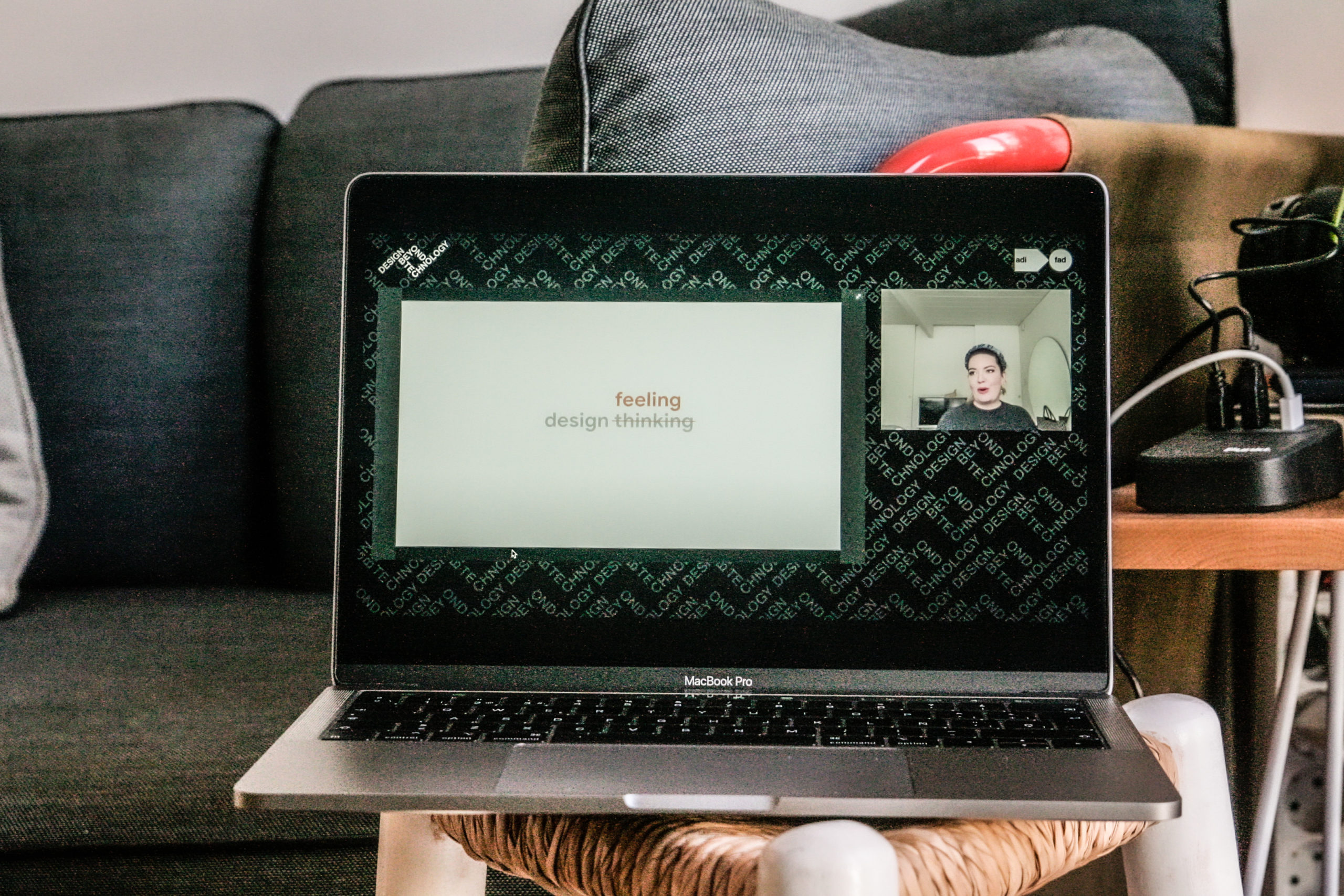
On the second day, Friday 26 March, we had almost 3 hours of delectable contributions and exchanges led by Joan Recasens, who started talking about the challenges of World Climate Day between Climate and Technology as well as the concepts of real reality and fake reality.
We can find the Friday 26/3/21 session on ADI-FAD YouTube the conferences in their original version, and in English, with the following timing:
– Matteo Guarnaccia & Gabriel Alonso – Institute for Postnatural Studies. 0:17:00 (40’).
– Jamie Cobb – Map Project Office. 0:57:00 (33’).
– Bas Van De Poel – Modem | Ex Creative Director at SPACE10. 1:29:00 (23’).
– Juan Umbert & Adrià Colominas – Makeat. 1:52:00 (30’).
– Danae Gómez & Clara Subirats – Nacar Design. 2:22:00 (30’).
The first speakers were Matteo Guarnaccia and Gabriel Alonso of the Institute for Postnatural Studies (0:17) created this last year with the aim of exploring artistic experimentation and encouraging critical thinking. They presented how, with technology, mankind is modifying the concept of nature.
Human beings have gone from being a mineralogical force that is transforming the chemical composition of the earth’s crust into that point of inflection in which nature and culture are connected in a new postnatural geological era. This postnatural era requires another ecology and another language, image, archetype or aesthetic to represent it.
In 2000, when Paul Crutzen and Eugenie Stoermer presented the idea of the Anthropocene, they were 50 years behind. According to Gabriel Alonso, human action goes back to the first Trinity nuclear tests in 1945, when human beings created Trinita, also known as Alamogordo glass. Gabriel introduced the “anthrobscene” as a global moment when technology modified the planet’s territory. The duo discussed the use of materials and their impact on ecology and the associated aesthetics in representing the climate crisis.

The second speaker was Jamie Cobb, of Map Project Office (0:57), a company founded in 2012 by Edward Barber and Jay Osgerby to accommodate the portfolio of projects for tech companies such as Google, IBM, Sony, etc. With the title of Digital Ornaments they describe the physical practices in the digital domain in order to increase interaction between technologies and people, in which the environment is crucial. A facilitator of daily tasks in which the challenge appears to lie in making technology invisible, making it disappear in an environmental intelligence.
According to Cobb, the vision of futurologists is embodied in reality through industrial design even if it seems that the disappearance of the real world is approaching due to the miniaturization and integration of technologies into the physical world.
The question is: what will we design in a world with few physical products? Will we end up designing digital products?
Jamie is confident that satisfying virtuality requires the physical possession of goods. In the future, objects will retain a small physical part that will need to be designed and has to take into account the behaviours, relations and commitments of the virtual world in the real world.
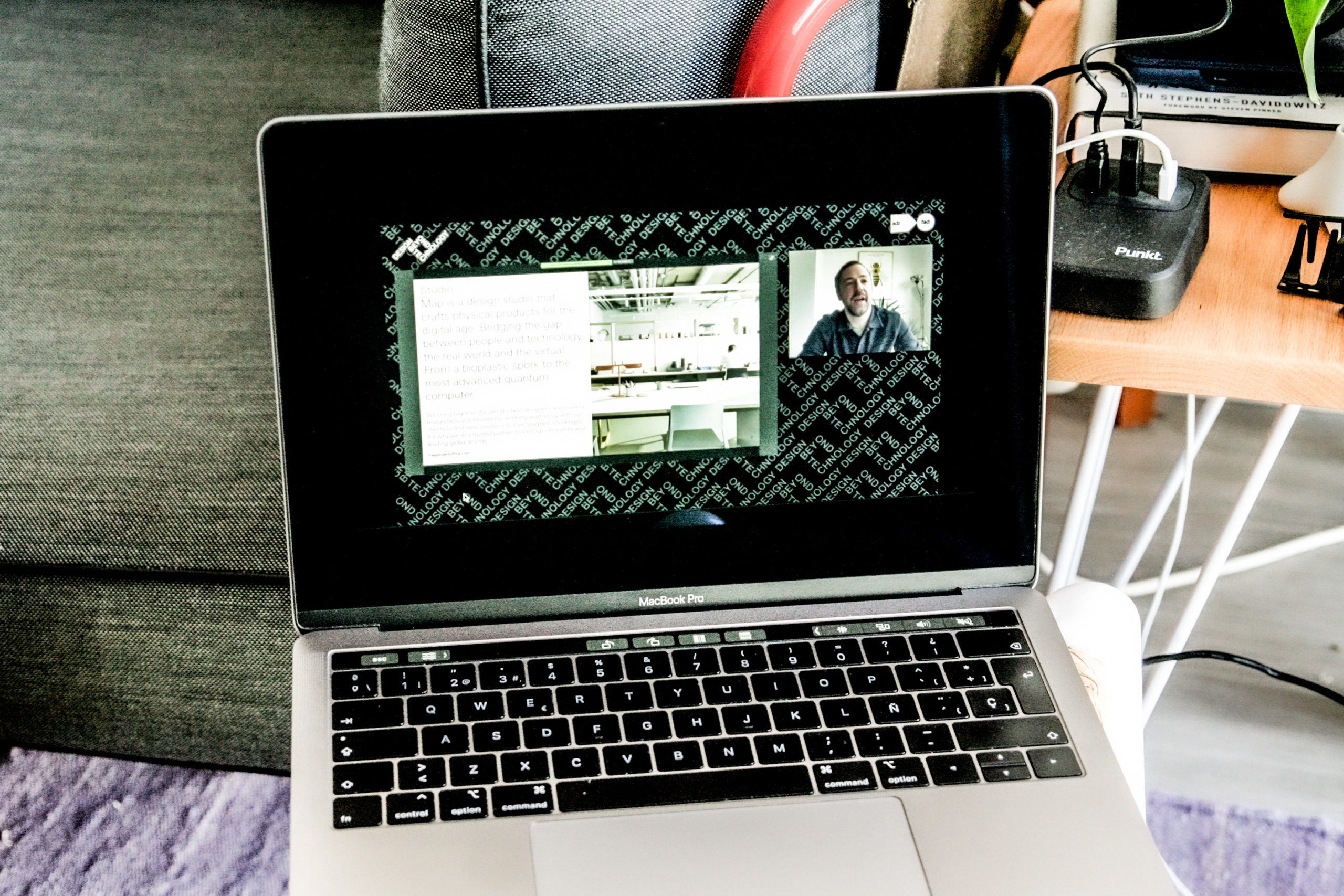
The third speaker was Bas Van De Poel, former creative director of SPACE10 (1:29). Digital signs may alter the physical sphere, and Bas states that in a few years 45% of people will be unnecessary and this will have many implications for society. But before imagining the worst possible future, the best way to predict that future is to invent it.
Designing the post-pandemic conditions and making use of the capabilities artificial intelligence has and will have, together with their significance in the practice of design and especially its applications in creativity.
Bas shows different examples of how algorithms create images, shapes and new languages, the new aesthetic standards and hyper-realistic and symbolic images that are applied in everything from producing bedroom proposals for Ikea to reinterpreting images with artistic styles to reinterpreting the human stroke, formalizing scenarios and designs by connecting concepts, based on descriptions for figma or the classic example of the aguacate chair, as well as integrating virtual reality. He leaves us with a striking and thoughtful quote he read in FastCompany: Training and directing creative machines will be one of the most exciting and important creative jobs of the future.
Bas makes 5 predictions, on one hand democratizing the use and application of creativity and on the other its large-scale application. He advises that a dramatic productivity is approaching that will increase the ease of creating for designers by using new tools to give rise to millions of possibilities and offering many varied directions at the simple touch of a button, transforming their craft into the tasks of curating and editing, reviewing and selecting.
Adobe is integrating Artificial Intelligence into its tools and it is just a question of time before more examples and real tools appear to facilitate and boost the designer’s work. Bas sends us a hope-filled message, which is that machines do not yet visibly recognize “what looks cool”. Controlling the aesthetics and the image will be important in developing one’s own style with sufficient consistency to prevent being copied, imitated, reproduced or developed by a machine.
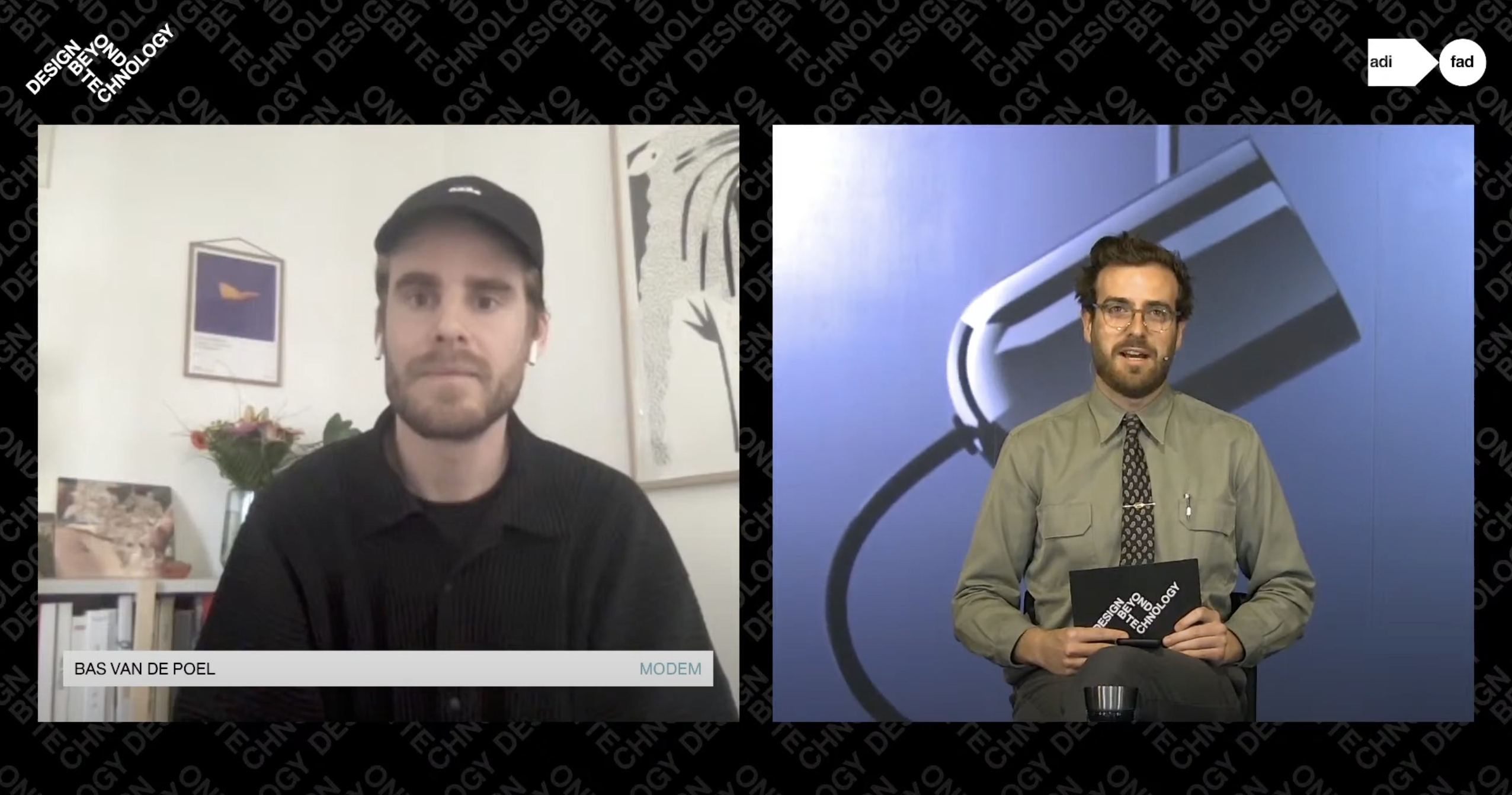
Juan Umbert and Adrià Colominas presented Makeat as connectors of innovation and food professionals. They gave examples of how technologies merge in the gastronomic space. In the creation of both imaginary and real display windows, in the future the windows of our everyday shops will be digital and the images will require personalized solutions and the creation of a gastronomic ecosystem that will need to be designed between a group of designers, the clients’ intentions and the users’ needs.
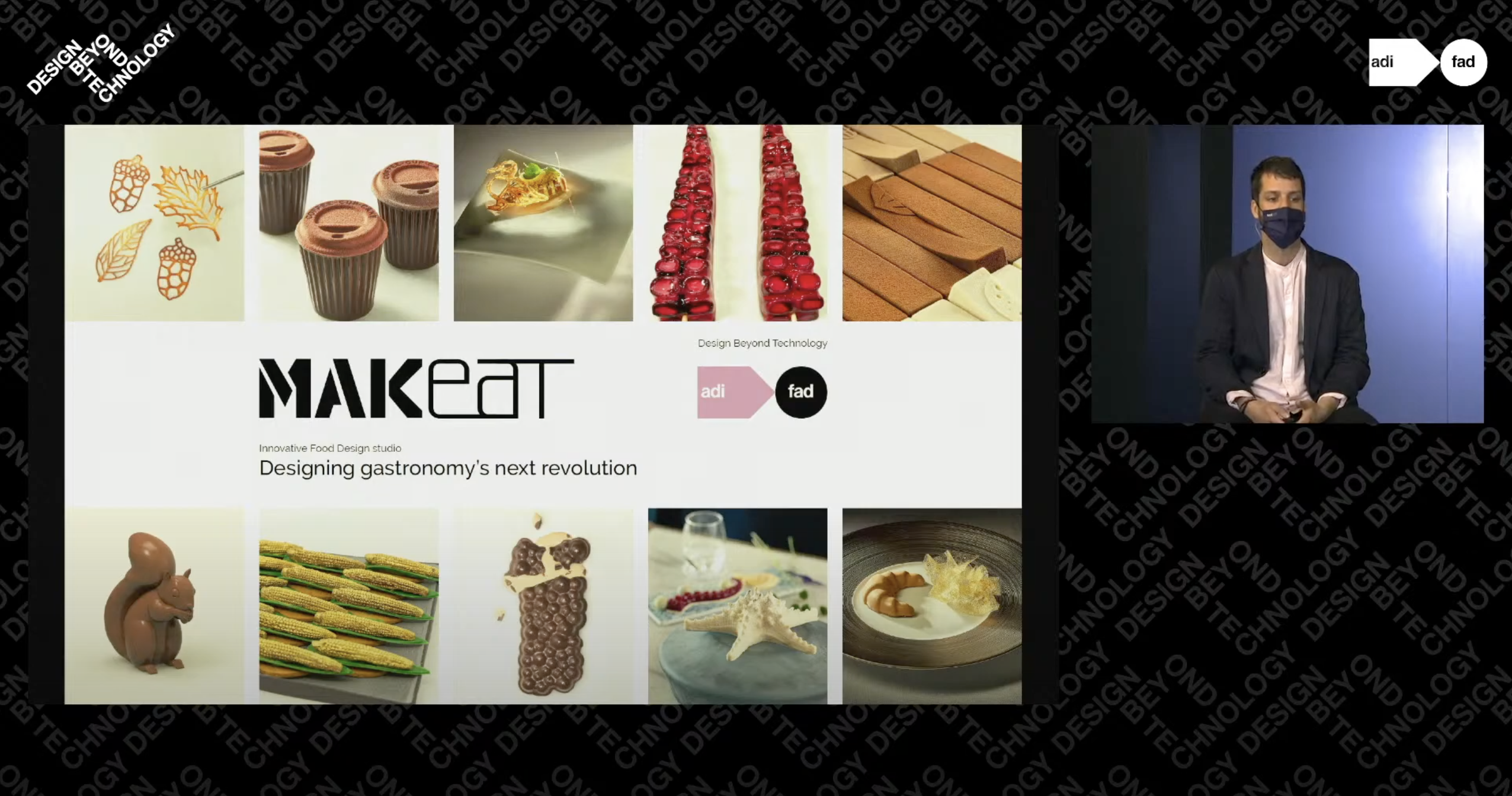
Danae Gómez, design strategist, and Clara Subirats, product designer, presented Nacar Design, a Barcelona-based design agency of 80 creatives who offer what they call a design of three transitions: elements, bridges and platforms. They explained different cases for HP, Bioceryx DNA, Correa, Vueling, etc. One of their services consists of translating technology into the principles of design, humanizing through the user experience and testing how to join together the real world and the corporations, or how businesses and sectors are connected. Transition design creates visions from the outside to create alignments or realities from the inside of large companies, such as printers as furniture for the Sant Cugat HP office. Printers are in fact connectors that join the digital to the physical, but they tend to be hidden away. Clara tells us that in the past the physical aspect was very important and currently the digital one appears to be indispensable, but in the future there will be a balance between both worlds.

These two days served for reflecting and understanding the challenges inherent to the relations between the digital and the real, from science fiction to the fears and possible futures that may arrive and for which design will surely offer responses to humanize and improve the entire process.
Chronicle: Guillem Ferran.